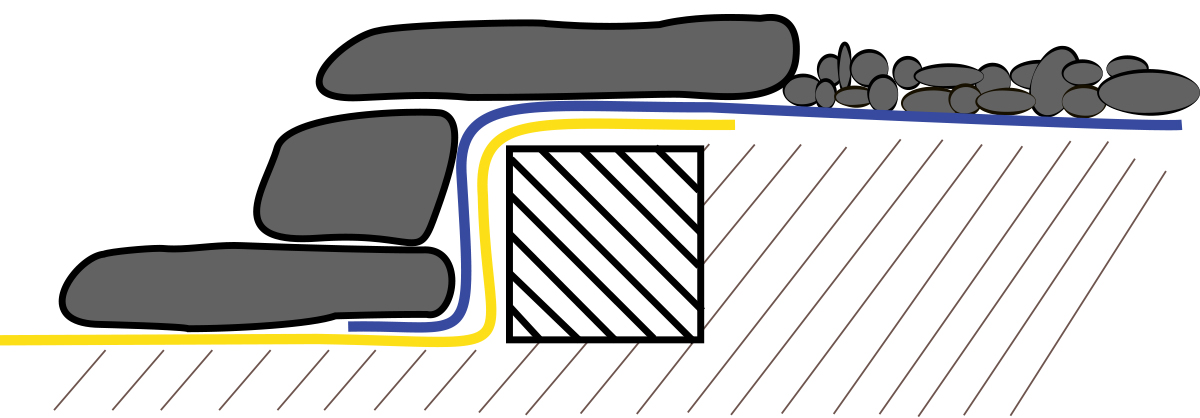Pond-Free 103 Chapter 6
Overlapping vs. Seaming the Liner
Joining two pieces of liner isn’t the nightmare that it once was, now that we have terrific primer/adhesives like Quick Prime Plus available, but there’s an easy way to avoid the fuss altogether, especially on Pond-free waterfalls, by overlapping at a vertical transition. All that’s needed for a perfect, leak-proof overlap is a solid, vertical step that’s above water level and at least 8” tall. Set the lower liner over the top of the step then overlap the upper liner over the lower. Place stones on top of the step so the lower liner can’t settle or pull downwards, and you’re done. Remember, the face of the step has to be vertical – a slope will allow water to move upwards against the force of gravity by capillary action, the way water reaches the leaves at the top of redwood trees. Also, make sure that the step itself can’t settle or collapse. A line of cinder blocks under the layers can be very helpful in creating a solid step that will resist settling indefinitely, but be careful to pad the step with extra underlayment or scrap liner when setting stone on the covered blocks so the liner doesn’t get pinched on the sharp edge of the blocks.

Joining two pieces of liner isn’t the nightmare that it once was, now that we have terrific primer/adhesives like Quick Prime Plus available, but there’s an easy way to avoid the fuss altogether, especially on Pond-free waterfalls, by overlapping at a vertical transition. All that’s needed for a perfect, leak-proof overlap is a solid, vertical step that’s above water level and at least 8” tall. Set the lower liner over the top of the step then overlap the upper liner over the lower. Place stones on top of the step so the lower liner can’t settle or pull downwards, and you’re done. Remember, the face of the step has to be vertical – a slope will allow water to move upwards against the force of gravity by capillary action, the way water reaches the leaves at the top of redwood trees. Also, make sure that the step itself can’t settle or collapse. A line of cinder blocks under the layers can be very helpful in creating a solid step that will resist settling indefinitely, but be careful to pad the step with extra underlayment or scrap liner when setting stone on the covered blocks so the liner doesn’t get pinched on the sharp edge of the blocks.





